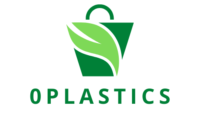Plastic. It’s everywhere. From the bags we carry our groceries in to the bottles we drink from, it’s become an essential part of our modern lives. But at what cost? Plastic pollution is choking our oceans, harming wildlife, and infiltrating our food chain. The science is clear: we need to break our addiction to plastic.
But how do we do that? The answer lies in the thriving field of materials science, where researchers are working tirelessly to develop eco-friendly alternatives. This is no easy feat. Plastics are incredibly versatile and cheap to produce. Replacing them requires innovation, ingenuity, and a deep understanding of the natural world.
Here are a few of the exciting scientific advancements leading the charge in the plastic-free revolution:
1. Bioplastics:
These are plastics made from renewable resources like corn starch or cellulose. Unlike traditional plastics, they biodegrade relatively quickly, breaking down into harmless compost instead of polluting the environment. While bioplastics have limitations (they can’t withstand high temperatures like some traditional plastics), they’re a promising alternative for many applications.
2. Mycelium-based materials:
Mushrooms are nature’s recycling champions, breaking down organic matter with remarkable efficiency. Scientists are harnessing this power by using mycelium, the root-like network of fungi, to grow packaging materials, furniture, and even clothing. Mycelium is lightweight, strong, and completely biodegradable, making it a sustainable and potentially game-changing alternative to plastic.
3. Seaweed-based packaging:
Oceans are a treasure trove of eco-friendly materials, and seaweed is one of them. This fast-growing algae can be transformed into films and coatings that are both water-resistant and biodegradable. Imagine your takeout container being made from seaweed instead of plastic foam! It’s not just a futuristic dream; seaweed-based packaging is already being used by some companies.
4. Nanocellulose:
This wonder material is made from the tiny fibers found in wood pulp. Nanocellulose is incredibly strong, flexible, and transparent, making it a potential replacement for everything from plastic wrap to touchscreens. The research on nanocellulose is still in its early stages, but its potential is enormous.
5. Edible coatings:
One of the biggest challenges in food packaging is preventing spoilage. Traditionally, this has been done with plastic. But what if we could coat our fruits and vegetables with an edible, biodegradable film instead? Scientists are developing such coatings from natural materials like waxes and proteins. This could not only reduce plastic waste but also extend the shelf life of food.
These are just a few examples of the many innovative solutions emerging from the world of science. The quest for plastic-free alternatives is a global one, with researchers from all over the world collaborating to find sustainable solutions.
It’s important to remember that science alone can’t solve the plastic pollution crisis. We also need changes in consumer behavior, government policies, and industry practices. But the scientific advancements we’ve seen here give us hope for a future where we can enjoy the benefits of modern materials without choking our planet.
So, what can you do to be part of the solution?
- Support companies that are using eco-friendly packaging and products.
- Reduce your reliance on single-use plastics.
- Carry reusable bags, bottles, and utensils.
- Compost food scraps instead of throwing them away.
- Educate yourself and others about the issue of plastic pollution.
Together, we can make a difference. Let’s join the movement for a plastic-free future, one sustainable step at a time.
In addition to the scientific advancements mentioned above, here are some other promising areas of research:
- Self-healing materials: Imagine a plastic that can repair itself when damaged, eliminating the need for constant replacement.
- Upcycling and recycling technologies: Finding new ways to give old plastic a new life is crucial to reducing our reliance on virgin materials.
- Biodegradation catalysts: These enzymes can accelerate the breakdown of traditional plastics, helping them decompose in landfills or compost heaps.
The future of plastic-free alternatives is bright. With continued investment in research and development, we can create a world where plastic pollution is a thing of the past.
